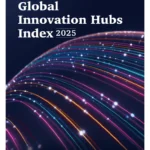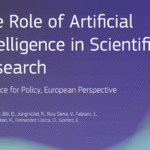
Cities and metropolitan areas are crucibles of creativity, driving advances in scientific, technological, social, and artistic realms. The interconnected fabric of diverse minds and opportunities, reinforced by robust infrastructures, serves as fertile ground for the birth, flourishing, and proliferation of new technologies and ideas. While this phenomenon is widely recognized, the intricate interaction between geography, political borders, and the diffusion of technologies remains an area ripe for exploration.
In the quest to unravel the mysteries of the pathways of technological innovation diffusion, researchers from Sapienza Univ. of Rome and Centro Ricerche Enrico Fermi delved into the factors shaping the global diffusion of innovative technologies among metropolitan areas worldwide and assessed how geography and political borders impact this process.
“We reveal that current pathways of technological innovation can be effectively predicted if a non-trivial interaction between, on the one hand, the similarity between the technological content of cities and, fundamentally, belonging to the same country is considered,” report the researchers.
Mapping Progress
To better understand this paradigm shift, the research provides a visual exploration of the competitive and diversified landscape of countries and metropolitan areas. By plotting their evolution in a two-dimensional space, two distinct paths of technological innovation are identified. These paths serve as models, outlining various strategies that regions employ to drive progress.
The researchers adopted the PATSTAT database to gather information on patent codes and technology. Each patent is associated with a code and a number of associated technology codes.
For metropolitan areas (MAs), they adopted a database to match the unique patent identifier and its technology code with the corresponding metropolitan area.
The Legacy of Political Geography
The study’s evidence underscores the lasting impact of political geography on the diffusion of technological innovation. While it played a fundamental role in shaping the landscape until recent times, a noticeable decline in its influence is observed, in favor of a more globally interconnected technological innovation ecosystem.
According to the study’s results: “When comparing geographical proximity, we found that belonging to a country is relevant in determining the probability of technology diffusion between metropolitan areas. The results indicate that, at equal geographical distances, technology diffusion occurs more easily between metropolitan areas belonging to the same country.”
In this sense, borders that were once limiting have given way to a more interconnected global innovation ecosystem that fosters collaboration and transcends geographical limitations.
Implications for Policymakers
As stewards of economic growth and technological advancement, policymakers can gain valuable insights from the research. Tailored investments in priority areas of technological innovation can strategically align with the identified pathways.
By understanding the changing dynamics of technological diffusion, governments and policymakers can design policies that not only foster local innovation but also leverage the potential for global collaboration, ensuring sustained progress.
In this regard, the researchers developed a predictive model for the future technological production of MAs that considers similarities between technologies and metropolitan areas and adds the contribution related to belonging to the same country, allowing predictions even for metropolitan areas with empty technological portfolios.
According to the researchers: “The model developed in this study can predict technology diffusion transparently and understandably, unlike other ‘black box’ predictive models present in the literature. These characteristics enable informed decision-making regarding investment and technological innovation. From this perspective, our framework could be a valuable tool for policymakers to guide investment decisions and prioritize areas of innovation.”
Conclusion
In the dynamic tapestry of technological evolution, our exploration has illuminated the changing dynamics of metropolitan innovation pathways. While political geography has wielded considerable influence in the past, the current era witnesses the emergence of a borderless innovation landscape. Understanding these changes allows policymakers to navigate the complex interaction between geography, politics, and technology, guiding their regions toward sustained economic growth and technological excellence.
“Our work provides insights to policymakers seeking to promote economic growth and technological advancement through personalized investments in priority areas of technological innovation,” concluded the researchers.
Finally, the researchers report the limitations of the model, highlighting that the exclusive use of patents as an indicator of innovation represents a crucial limitation, and inventions do not encompass all forms of knowledge production in the economy, nor do patents cover all generated knowledge.
Contact
Matteo Straccamore
Physics Department, Sapienza Univ. of Rome
Piazzale Aldo Moro 2, 00185, Rome, Italy
Email: matteo.straccamore@uniroma1.it
Reference (open access)
Straccamore, M., Loreto, V. & Gravino, P. The geography of technological innovation dynamics. Sci Rep 13, 21043 (2023). https://doi.org/10.1038/s41598-023-48342-8
Editor and founder of “Innovar o Morir” (‘Innovate or Die’). Milthon holds a Master’s degree in Science and Innovation Management from the Polytechnic University of Valencia, with postgraduate diplomas in Business Innovation (UPV) and Market-Oriented Innovation Management (UPCH-Universitat Leipzig). He has practical experience in innovation management, having led the Fisheries Innovation Unit of the National Program for Innovation in Fisheries and Aquaculture (PNIPA) and worked as a consultant on open innovation diagnostics and technology watch. He firmly believes in the power of innovation and creativity as drivers of change and development.





